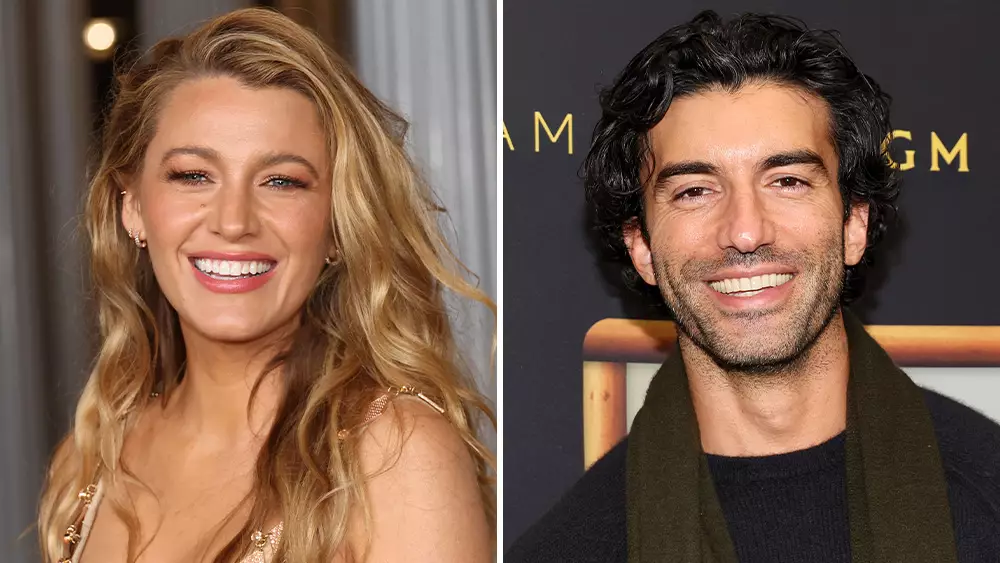In a landscape often filled with glitz and glamor, Hollywood is not without its darker corners. The recent legal drama surrounding Blake Lively and Justin Baldoni has exposed the underlying issues of harassment and retaliation that can pervade the entertainment industry. This illuminating case underscores the complexities of power dynamics in a field where public personas clash with private battles. Lively’s pursuit of justice in the form of a lawsuit not only magnifies her personal struggle but also shines a light on broader societal issues, raising essential questions about accountability and workplace safety in the film industry.
The Complaint Unveiled
On the final day of 2024, Blake Lively made headlines with news of her federal lawsuit against her co-star and director Justin Baldoni, alongside Wayfarer Studios and other involved parties. Following her initial complaint to the California Civil Rights Department, which raised serious allegations of sexual harassment and retaliation, Lively escalated her fight by filing in federal court in New York. The crux of her legal allegation revolves around coordinated efforts by Baldoni and his team to silence her and suppress discussions regarding a hostile work environment, specifically during the production of the film *It Ends With Us*.
The lawsuit outlines an impressive 13 claims, each shedding light on the alleged retaliatory scheme crafted to undermine Lively personally and professionally. Such a multifaceted approach indicates a profound breach of not just industry ethics but also legal conduct, as Lively’s legal team claims that the behavior of Baldoni and his associates crossed both state and federal lines. The complaints suggest a systemic failure to protect employees, exposing how power can be wielded to silence dissent.
Adding layers of complexity to this legal saga, the ongoing litigations reveal a striking counter-strategy by Baldoni and his team. Just as Lively amplified her legal battle, Baldoni also filed a $250 million lawsuit against *The New York Times*, alleging wrongful portrayal in a piece that examined the toxic dynamics within his production company. His assertions include claims that the publication irresponsibly misinterpreted private communications intended for internal discussion, thus heightening the narrative of victimization.
This interplay between Lively’s legal accusations and Baldoni’s defensive maneuvering represents a significant aspect of the power struggle within Hollywood’s sprawling ecosystem. It illuminates how public figures might engage in backlash tactics in response to criticism, effectively wielding their platforms in an effort to reshape public perception. In an era where a celebrity’s reputation can sway public opinion, this counter-legal action risks overshadowing the serious allegations raised by Lively, highlighting the profound challenges faced by those who dare to speak up against prominent figures.
The stakes of Lively’s pursuit extend beyond her personal experience; they resonate with many who have endured similar mistreatment in the workplace. Her lawsuit reflects an urgent need to create a safe environment for all personnel involved in film production. According to her legal representatives, Lively was reportedly motivated to act not out of a desire for public spectacle but from a commitment to ensuring the safety and respect of her coworkers. This perspective is vital as it frames Lively not just as a celebrity but as an advocate for change in an industry notorious for its toxic atmosphere.
Lively’s steadfast approach serves as an important catalyst for discussions surrounding workplace safety, reminding us of the vulnerabilities faced by those within an industry ruled by visibility and recognition. The document outlines how, rather than seeking conflict, Lively was initially focused on advocating for a respectful workplace, which ultimately culminated in her public fight against bullying and harassment.
As the legal proceedings unfold, both in California and New York, the implications of this case extend into the very fabric of Hollywood’s culture. It serves as an urgent reminder that behind the shimmering façade of fame lies a mosaic of human experiences shaped by both triumphs and tribulations. Blake Lively’s actions not only challenge the status quo but also encourage a broader reconsideration of how power is structured and how it can be questioned. In an industry hungry for change, her story is just one among many that underline the necessity of accountability, respectful interaction, and a safe working environment for all. The outcome of this court battle could set a powerful precedent, potentially reshaping not just the workplace for actors and filmmakers but for countless individuals across various sectors who aspire to have their voices heard.
